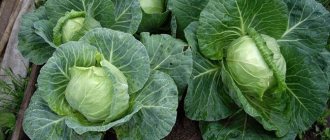The rosemary plant (Rosmarinus) is part of the Lamiaceae family. This genus is represented by evergreen shrubs and subshrubs. Under natural conditions, this plant can be found in such European countries as Portugal, Italy, Spain, Greece, in the southern part of France and in the countries of the former Yugoslavia, as well as in North Africa: Tunisia, Libya, Morocco, Algeria, as well as in Turkey and in Cyprus.
From Latin, “rosemary” is translated as “sea freshness”, this is explained by the fact that the ancient Greeks associated rosemary with the sea Aphrodite, who appeared from sea foam. However, the smell of this plant is not at all similar to the iodine sea aroma. It is more like a combination of the smell of camphor and pine, so the Greek name of the plant, translated as “balsam bush,” is closest to the truth. People used to believe that rosemary helped improve memory; therefore, in Ancient Greece, students often put wreaths on their heads, which were woven from rosemary branches. In culture, this plant has become popular due to its special aroma. This plant is included in the “bouquet garni” and the collection of Provençal herbs, and is also added to drinks, marinades, and vinegar is infused with rosemary. This evergreen shrub is distinguished by its heat-loving nature, so it can be grown in open ground only in those regions where winters are warm. And in those countries where the climate is cool, rosemary is grown as a container and indoor crop.
What does rosemary look like, what family does it belong to?
First of all, it is important to remember how to spell the name of the crop: razmarin or rosemary. Only rosemary, and nothing else.
This plant is a shrub; its homeland is considered to be the Mediterranean, or more precisely the western part, where this grass actually grows like a weed - everywhere. He especially likes places with hot summers, such as Crimea and Krasnoyarsk. It grows well in Ukraine too.
Rosemary is a shrub of amazing beauty
The Lamiaceae family, which includes the various types of rosemary, belongs to a large genus called Rosemary. In Latin, the name of the plant sounds like Rosmarinus officinalis.
The bushes of the plant are formed from long shoots that become woody over time. The leaves are lanceolate, with folded edges, dark green above and white-silver below, with a strong and bright spicy aroma. Many people cannot say what rosemary smells like, since its smell simultaneously contains notes of pine needles, eucalyptus, resin, camphor and lemon. The taste of young shoots and leaves is pungent, with a bitter aftertaste.
An adult rosemary bush in optimal climatic conditions can reach three meters in height. However, there are two main types of this plant, differing in description: those that grow upward, and those that are creeping, growing wider. In central Russia, rosemary bushes behave more modestly, and their sizes are on average about 70 cm in height and width.
Important! During the flowering period, depending on the variety, it is covered with small flowers of white, pale blue, blue, lilac, and pink. The fruit is a small nut.
The root system is highly branched, reaching up to two meters deep into the soil.
Description of the plant and photo
Rosemary repels insects with its aroma
Rosemary (Rosmarinus) is related to plants such as lavender, lemon balm, mint and basil. Their aroma cannot be confused with anything else.
Sometimes you hear alternative names: sea dew, wedding flower or frankincense herb.
Externally, rosemary looks like a tall shrub (some varieties can reach a height of 1–2 m) with needle-shaped leaves (in this it is similar to coniferous species). This is a flowering plant, so you can often see small flowers of pink, white or purple on it. Its fruits are round and resemble nuts.
There are about 5 varieties of rosemary in nature. Medicinal rosemary is considered the most popular among gardeners.
Briefly about the history of appearance
So, what is rosemary and what are its uses? This plant became famous many centuries ago. According to some legends, it owes the sky-blue color of its flowers to the Virgin Mary, who placed her cloak on the bush to protect the baby Jesus from the heat of the sun. According to other legends, the cause of the appearance of rosemary flowers was drops of sea foam, in which the goddess of love and beauty was born - Aphrodite among the Greeks and Venus among the Romans.
Figs - care and cultivation in open ground, pruning
Since ancient times, rosemary sprigs were placed in the hands of the dead to brighten their path to the kingdom of shadows - in Egypt. It was also added to the bride's bouquet, decorated with them on the wedding dresses of the newlyweds, and given small bouquets of rosemary branches to guests - in medieval Europe.
Interesting to know: at different times, in different cities and countries, rosemary was considered a plant for lovers. And if after the wedding the rosemary branch planted by the young spouses began to grow, this promised a long and happy life for the couple, full of love and harmony.
Dried spice leaves and fresh shoots are used in cooking.
Use of rosemary in cooking
Caucasian medlar - growing in the garden in open ground
Today, this spice is confidently winning the hearts of gourmets from all over the world: the question of where to add rosemary receives a lot of answers. Dried leaves go well with fish and meat, as well as with many stewed or baked vegetables. Prepared dishes are also decorated with fresh leaves and shoots.
Important! Due to the high content of essential oils and a fairly bright aroma, this spice requires very careful and extremely dosed use.
Most often, the herb is added a few minutes before the end of cooking to add an interesting accent to the dish. Otherwise, there is a risk of interrupting the aroma and taste of the ingredients themselves.
Reproduction by dividing the bush
How to divide a rosemary bush photo
Indoor rosemary is most often propagated by dividing the bush. Remove the bush from the soil, divide it into several parts: each section should contain a developed rhizome and shoots. Treat the cut areas with a fungicide and plant the cuttings.
Medicinal properties of rosemary
Anemones - growing and care in open ground
The herb has good anti-inflammatory and wound-healing properties, and also normalizes blood pressure at low levels, has a beneficial effect on the nervous system and relieves headaches. Rosemary decoctions are used for colds, stomach diseases, and also as a choleretic and diuretic. Due to these properties, it is useful to collect and dry rosemary to add to your home medicine cabinet.
Growing rosemary in the Middle Zone
It is known that rosemary is a heat-loving plant, so many gardeners have a question: how to plant rosemary if there is practically no sun at the dacha?
Rosemary: where to plant in the garden
Before planting the plant, you need to decide whether rosemary will be a perennial or an annual? The plant itself is a perennial, but it is not always possible to provide it with conditions for wintering or to replant it, so sometimes it is grown only for one season. In the Moscow region and in general regions with cold winters, this is an annual plant.
Planting rosemary should take care of the seedling
In any case, it is important to remember that the spice loves the sun and warmth, and does not tolerate temperature changes, cold weather or excess moisture. Therefore, the optimal place to plant it will be the south or east side, well illuminated by the sun. It is best to plant shrubs along the south side of the house - it will protect the plant from strong winds, and a light, pleasant aroma will reign in the rooms.
It is imperative to choose a place where water does not stagnate, otherwise the plant will die very quickly. Thyme, basil, bay, dill and parsley will be good neighbors for rosemary. Some gardeners also plant it next to cucumbers and various members of the nightshade family, as the aroma of the plant repels pests well. But mustard and horseradish will quickly destroy their Mediterranean neighbor.
Priming
It is best to plant the spice in permeable, sandy soil containing plenty of nutrients. It is important that the soil is well drained and has an acid-base balance of 6-7 units. Soils that are too acidic or too alkaline will destroy the plant.
You can make the optimal soil yourself by taking 2 parts compost, part lime sand and part small stones. Instead of lime sand, you can use any other sand, but in this case you will need dolomite additives, in the amount of a couple of spoons for every 5 liters of the resulting mixture.
Feeding
For better health and growth of the bush, it must be fed in a timely manner. The ideal feeding scheme would be the following sequence: nitrogen fertilizers are applied in the spring, complex fertilizers in the summer, and phosphorus fertilizers in the winter. This nutrition will allow the grass to grow well.
Important! Phosphorus fertilizers include superphosphate and ammophos, nitrogen fertilizers include ammonium nitrate, ammonium sulfate and ammonium sulfonitrate.
Pinching rosemary
Both in pots and in the garden, rosemary needs pinching to help it grow faster. Usually only young shoots (from 5 to 15 cm of the apical part) are pinched. Plucked or cut rosemary sprigs can be used as a seasoning in cooking, or for growing a new bush.
Timely pinching is the key to good growth
Harvesting
It is better to cut off the upper parts of the shoots for drying for the winter and preparing seasonings in sunny, dry weather. Then they are washed, dried and laid out on trays with paper. Leaves need to be dried in the shade. They are turned over from time to time to ensure even drying. Then put it in a glass or plastic container, close it with a lid and store it in a cool, dark place.
How does rosemary propagate?
The wild plant reproduces by seeds, but with artificial cultivation the possibilities of its reproduction are significantly increased.
Germination of seeds
To germinate rosemary seeds, you need to take gauze or a cloth napkin, moisten it and place the seeds in one layer between the layers. Place the gauze in a warm place - the optimal temperature for germination is 20-22 °C. It is important to ensure that the gauze does not dry out - to do this, it must be sprayed with a spray bottle in a timely manner.
When the roots appear, the seedlings will be ready. You need to prepare the soil: it should be moist, but not wet. The seeds are carefully separated from the tissue - the roots are very fragile, it is important not to damage them, and are placed on the ground. They are covered with a layer of soil (0.5-1 cm) on top and the soil is moistened with a spray bottle. Cover the container with soil with a lid or polyethylene, leaving several holes for ventilation, and wait for the first shoots.
Important! The germination rate of this plant is not 100%, so it is necessary to germinate more seeds than are going to be planted in the end.
As soon as the first shoots appear, it is necessary to remove the lid or polyethylene and expose the container to the sun - this will allow the sprouts to gain strength and grow faster. After two or three true leaves appear, the seedlings are transplanted into individual containers. If you plan to plant rosemary in open ground in the spring, then it is better to start germinating the seeds in mid-late February, since the plant takes a long time to germinate, even if you carefully care for it.
Rooting cuttings
An easier way is to root cuttings. To do this, you need to cut a cutting about 10-15 cm long from the bush. Tear off all the leaves from the bottom and place the cuttings in a container with water. After about 3 days, the first roots will appear, and after a week they can be planted in the soil.
Propagation by cuttings is the easiest way to propagate rosemary.
Air layering
The air layering method is most often used on trees. In the case of rosemary, the method will be more experimental. To do this, you will need to carefully remove the top layer of bark from the woody part of the shoot, approximately 20-30 cm from the top. Then cover this area from sunlight and surround it with warm and moist soil or moss. When the roots begin to actively grow, this part of the shoot is separated from the main bush and planted in the ground.
Dividing the bush
An easier way would be to divide a large bush into several small ones. To do this, you need to carefully dig up the entire bush along with the roots and carefully separate the shoots with a separate root system, and then plant new bushes at a distance of at least 50 cm from each other.
Choosing a landing site
When determining a suitable place for rosemary in the garden, its preferences are taken into account:
- a lot of light and warmth;
- neutral or slightly alkaline light and loose soils;
- neighborhood - rosemary gets along well with legumes, onions and cabbage, but poorly with roses.
The soil is taken from a coniferous forest, compost or ready-made substrate from the store. There should be no stagnation of groundwater at the planting site. The plant tolerates drought normally. Humidity is deadly for him.
When choosing a bed, take into account the height of the bushes. They vary from 50 cm to 2 m. Prostratus is the shortest variety, characterized by creeping stems 15 cm long.
Rosemary: features of growing in open ground in the Urals
If you want to have rosemary all year round, growing it in open ground is not quite a suitable solution, especially in the more northern regions of the country. The plant needs a large amount of sun and heat, and sudden changes in temperature or cold winters will destroy it.
Important! Even in areas near Moscow, this plant does not always manage to survive the winter, even with its roots covered with sawdust for the winter. What can we say about the Urals, where growing rosemary in open ground is simply impossible.
That is why in the northern regions, spices are grown in pots and taken outside only in the summer, when stable warm weather sets in, at least 15 °C. Rosemary, thyme, and many other heat-loving plants can thus bloom and delight gardeners all year round. At the same time, this growing option will not cause any trouble - you just need to replant the plant in time as the root system grows into larger pots. Otherwise, caring for the plant will be exactly the same as when growing in open ground.
Growing in pots is the best way for cold climates
Rosemary: features of growing in open ground in Siberia
In the case of the Urals, growing rosemary in Siberia in open ground is an extremely difficult and painstaking task that is best avoided.
Of course, some gardeners prefer to plant spices only for one summer. Others plant the bushes in the ground when the weather warms up, and then transplant them back into pots in the fall. This is also a good option for growing rosemary, but its fragile roots do not always survive such frequent changes in location.
Possible growing problems and ways to solve them
There are rarely any problems when growing rosemary. The most important thing here is to follow all instructions and carry out proper care. But you still need to be aware of possible errors:
- if the leaves are dull and wither, protect the rosemary from direct sunlight, create shade for it;
- if only the lower ones have turned yellow, watering should be increased;
- if the aroma of the plant becomes weak and the leaves fall off, on the contrary, moderate watering;
- if the leaves are curled and covered with dots, the bush is affected by whitefly or aphids, spray the plant with a suitable composition (Admiral, Aktara, etc.).
Southern plants are always associated with rest, warmth, the sea and relaxation, so almost every gardener strives to have one or two such green guests on their plot. Rosemary has become increasingly popular lately. Through trial and error, gardeners adapted this fragrant shrub to life in different regions of Russia.
- Author: Darina_a
Rate this article:
- 5
- 4
- 3
- 2
- 1
(3 votes, average: 5 out of 5)
Share with your friends!
How to grow rosemary at home on a windowsill from seeds
Growing spices at home is not difficult: you need to germinate the seeds in the indicated way, plant the seedlings in separate containers, and as they grow, transplant the plants into larger pots instead of open ground.
Important! It is necessary to trim the tops in a timely manner and shape the bush so that it does not grow excessively upward.
Due to its properties and variety of uses, rosemary is increasingly becoming a plant grown on windowsills. The main thing is that it gets enough sunlight - then it will delight with its rich aroma and bright color.











